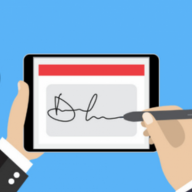What Every Cybersecurity Team Should Know About Metadata and Its Risks

Digital & Technology
104 week ago — 8 min read
Today, every company operates in an expanding cyber-threat landscape. Clever hackers, armed with sophisticated tools and supported by vast amounts of money are lurking around every corner, looking to attack your organisation, damage your IT assets, and compromise your business-critical data.
In this environment, a strong cybersecurity team is a vital part of every firm. This team can protect the business from the devastating effects of a cyberattack. They also safeguard its information and people, and prevent data breaches, identity theft, corporate espionage, and other types of serious cybercrimes.
Experienced and knowledgeable cybersecurity personnel can also defend the firm from metadata leaks and breaches. Such breaches can have catastrophic consequences, so cybersecurity teams need to be prepared at all times. They must know about the risks of metadata, and the causes and effects of a metadata breach.
If you are a cybersecurity professional, this article will help you update your metadata knowledge and upgrade your skills to safeguard your organisation from future metadata breaches and leaks.
Let’s start with the basics: what is metadata?
What is Metadata?
Simply put, metadata is data about data. Thus, any comments, timestamps, tracked changes, revision marks, or properties that tell a user more about a document or the data contained in it – is metadata. Metadata can also include personal information such as the document creator’s name or company details, as well as headers, footers, and watermarks. More often than not, metadata is not visible to a person using the document. This may be the author, viewer, or reviewer, editor, etc.
Even so, metadata is important because it helps make a document and its information findable, usable, and reusable. A document that contains metadata – some of which is automatically created – provides information about who created a document and when, which department the creator belongs to, and even what its content is about.
In sum, metadata plays an important role in document management and workflows. That said, it also creates multiple security risks for an organisation. Let’s explore these risks in the next section.
The Risks of Metadata
The biggest risk of metadata is that it can be compromised and put the organisation at risk of a cyberattack or data breach. It is very much possible for unprotected metadata to be revealed to the wrong people (e.g., hackers, cybercriminals, or malicious competitors). These adversaries may then take advantage of the metadata to steal further data (e.g., PII, IP, or financial information) or to embarrass your firm.
A metadata breach may end up damaging your reputation and may even result in financial losses or some kind of fines from a regulatory body. Depending on the data you lose, a breach could also affect your client relationships, result in client attrition, and damage your overall profitability and bottomline.
The possible risks of metadata and consequences of a metadata breach in your organisation are:
- The disclosure of personal and/or sensitive information that violate a person’s privacy and expose them to identity theft or fraud.
- Reputational damage, resulting in lost business, reduced customer trust, and negative media attention.
- Regulatory investigations, fines, or lawsuits, further damaging the company’s reputation and finances
- Operational disruptions, leading to downtime, lost productivity, and financial losses
- Long-term reputational damage, legal liabilities, and increased regulatory scrutiny resulting from the breach.
In short, even a single metadata breach can have serious and far-reaching consequences for your company. You and your cybersecurity colleagues must understand these risks and take proactive measures to prevent breaches. The next section unpacks some of these measures.
Also read: Does your company have a great security culture? Review these 6 crucial indicators
Strategies to Prevent Metadata Breaches
So now you know how metadata can become an attack pathway for clever cybercriminals looking to damage your firm and compromise its assets. The best way to keep them away is to act proactively to prevent such breaches from happening in the first place.
Here are some strategies to prevent metadata breaches and protect the company from harm:
- Remove metadata from critical or sensitive documents with a metadata cleaning software before the document is shared with others or sent via email.
- After you make changes to a document in MS Word, accept all changes and turn the “track changes” feature off before attaching the document to an email.
- Before sending an email with attached documents, check that the recipient list is correct.
Your cybersecurity team should deploy metadata management software because it is the most reliable way to remove metadata before files are shared and prevent metadata from falling into the wrong hands for possible exploitation.
What does this software do and how can it help safeguard your firm and its critical assets? Let’s take a look.
Why You Need Metadata Management Software
It’s critical to prioritise metadata management to ensure that all metadata is removed from documents and to prevent hackers from misusing metadata to steal your company’s information. And the easiest way to do this is with software.
Metadata management software automates metadata cleanup workflows to remove the need for manual scrubs and minimising the potential for costly metadata-related errors. The software will:
- Detect and clean metadata from all enterprise documents
- Block suspicious emails to protect users and data from hackers
- Ensure that users send the right document to the right recipients
- Prevent document misuse or theft
- Safeguard the firm from data breaches
The best software will prevent email send errors to protect employees against common mistakes, like replying to all when Bcc’d or sending emails to personal email addresses. Once you implement this software, all employees get alerts so they won’t make mistakes that may result in a data breach or leak.
Some metadata management software can be directly integrated with the company’s email client (e.g., Outlook) to automatically protect all users, whether they use desktop or mobile devices. Moreover, software with advanced automation features require very little manual intervention, so it will automatically scrub all metadata from documents to protect sensitive information and improve data security throughout the organisation – without slowing down or disrupting regular workflows.
Conclusion
Metadata breaches can have significant consequences for your company, as well its people and customers. As a member of the cybersecurity team, you must be aware of the risks of metadata and the possible consequences of a metadata leak. More importantly, you and your colleagues must take proactive steps to prevent the occurrence of such breaches.
In addition to the strategies discussed above, you should also implement strong data security measures, such as data leak prevention (DLP) and multi-factor authentication. It’s also useful to conduct regular risk assessments and train the company’s entire staff on the best practices to handle sensitive information. Finally, make sure to add metadata management and removal software to the cybersecurity stack.
Also read: Is your company prepared to see and address unimaginable threats?
To explore business opportunities, link with me by clicking on the 'Connect' button on my eBiz Card.
Image source: Canva
Disclaimer: The views and opinions expressed in this article are those of the author and do not necessarily reflect the views, official policy or position of GlobalLinker.
Posted by
Lion Amir ViraniTech Evangelist| Thought Leader | Social Entrepreneur | Enthusiastic Networker | Speaker| Startup Mentor
View Lion Amir 's profile
Most read this week












Comments
Share this content
Please login or Register to join the discussion